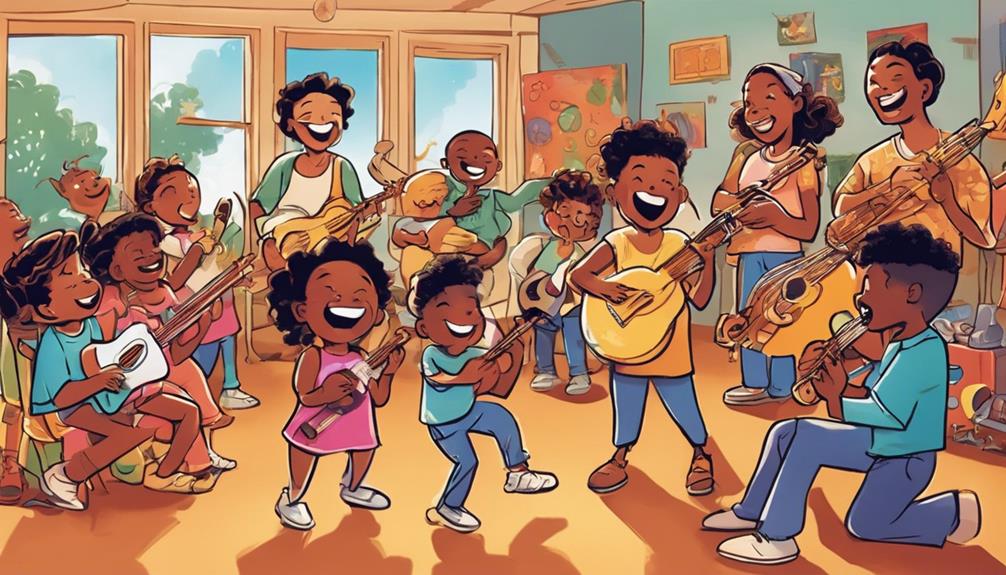Dreamee Teepees, a family-owned slumber party business, offers charming indoor camping experiences for children that ignite imagination and form lasting memories. With themed packages like Movie Nights and Pamper Parties, kids can enjoy safe and enjoyable adventures that promote independence skills. Founded with a vision to provide unforgettable sleepover experiences, Dreamee Teepees caters to parents looking for convenient ways to celebrate birthdays and create memorable moments for their children. Visit the website for further details on party themes, pricing, and exciting opportunities to get involved in this family-centered venture.
Key Takeaways
- Dreamee Teepees founded by Kaeden Bailey and Tara offers unique indoor camp out experiences.
- Provides themed packages like Movie Nights and Pamper Parties for unforgettable sleepover adventures.
- Encourages creativity, independence, and social interaction through activities like baking sessions and camping adventures.
- Perfect for dads seeking unique experiences to create lasting memories with their children.
- Opportunities available for flexible work arrangements as party hosts through Dreamee Teepees.
Dreamee Teepees Origin and Concept
Founded by Kaeden Bailey and Tara, Dreamee Teepees is a family-run slumber party company based in Leeds, offering unique indoor camp out experiences using teepees and dens. Kaeden Bailey's inspiration for the business stemmed from his desire for a birthday campout experience in December. With a vision to provide children with unforgettable sleepover adventures, Tara and Kaeden established Dreamee Teepees, which has now reached its first anniversary milestone.
The company focuses on creating safe and enjoyable environments for kids to explore their imaginations, fostering creativity and joy. Through themed packages like Movie Nights and Pamper Parties, Dreamee Teepees aims to offer families a hassle-free and memorable way to celebrate special occasions.
Benefits of Dreamee Teepees for Families

With a focus on providing families with hassle-free and memorable celebrations, Dreamee Teepees offers a range of benefits for parents and children alike. For parents, Dreamee Teepees solves the problem of planning unique birthday parties, allowing them to create special experiences for their children without the stress of organizing everything themselves.
Children benefit from these indoor campouts by being exposed to new experiences, enhancing their independence skills through organizing their own belongings, and enjoying themed packages like Movie Nights and Pamper Parties. These sleepovers provide a safe environment for children to develop lifelong skills while having fun and creating lasting memories with their friends.
Dreamee Teepees truly offers a unique and valuable experience for families looking to celebrate special occasions in a memorable way.
Dreamee Teepee Party Activities and Themes

The variety of party activities and themes offered by Dreamee Teepees cater to children's imaginations and aim to create memorable experiences for young participants. Dreamee Teepees provides a range of engaging activities such as Movie Nights, Pamper Parties, Camping adventures, Baking sessions, and more.
These themed parties are designed to spark creativity, encourage social interaction, and offer a fun and unique experience for kids. By tapping into children's imaginations, Dreamee Teepees aims to make every event special and unforgettable.
Additionally, the company is planning to introduce themed kids clubs in the future, further expanding the range of activities available. For more information on the various party themes and pricing, interested parties can visit the Dreamee Teepees website.
Great for Dads Who Want Unique Experiences

For fathers seeking distinctive and engaging experiences for their children, Dreamee Teepees offers a range of themed party packages designed to create lasting memories and foster creativity.
Dads looking to give their kids a unique birthday treat will appreciate the opportunity to host themed parties like Movie Nights and Pamper Parties that cater to their child's interests. These experiences not only provide a fun and safe environment for children to learn and grow but also allow dads to participate in creating unforgettable moments.
Additional Information and Opportunities

Explore the various opportunities available through Dreamee Teepees by visiting their website for detailed information on parties, prices, and upcoming themed kids clubs.
The website serves as a hub for all essential details, including the diverse party packages offered, pricing structures, and the launch of exciting themed kids clubs.
For those interested in joining the Dreamee Teepees team, there are upcoming opportunities to work as party hosts, with a focus on employing mums seeking flexible work arrangements.
Stay connected with Dreamee Teepees through their website and social media platforms to remain updated on the latest news, events, and offerings.
Don't miss out on the chance to be part of this innovative and family-oriented slumber party company.
Frequently Asked Questions
How Can I Book a Dreamee Teepees Slumber Party for My Child?
To book a Dreamee Teepees slumber party for your child, visit the company's website for detailed information on available packages and pricing. Explore themed party options like Movie Nights and Pamper Parties, perfect for creating memorable experiences.
Are There Any Special Discounts or Promotions Available for Bookings?
Special discounts and promotions are available for Dreamee Teepees bookings. Visit the website for updated information on current offers. Enhance your child's birthday experience with themed packages like Movie Nights and Pamper Parties. Book now!
Can Parents Customize the Themes and Activities for the Party?
Parents have the flexibility to customize themes and activities for Dreamee Teepees parties, ensuring a tailored experience for their children. This customization option allows parents to create a unique and memorable event for their kids.
Do Dreamee Teepees Provide Catering Options for the Parties?
Dreamee Teepees do not provide catering options for parties. However, they offer a unique experience with themed packages like Movie Nights and Pamper Parties. The hyperbole of their offerings will make your child's special day unforgettable.
Are There Any Age Restrictions for Children Attending the Parties?
Age restrictions are not specified for children attending Dreamee Teepees parties. The company focuses on providing unique sleepover experiences for kids, enhancing their skills and exposing them to new activities, creating a safe and enjoyable environment for all participants.
Conclusion
To sum up, Dreamee Teepees offers a unique and immersive sleepover experience for children in Leeds. With themed packages like Movie Nights and Pamper Parties, the family-run company provides a safe and engaging environment for kids to explore their creativity and social skills.
For example, a recent birthday party with Dreamee Teepees featured a magical unicorn theme, complete with colorful teepees, sparkly decorations, and unicorn-themed activities that left the children enchanted and excited for more.










